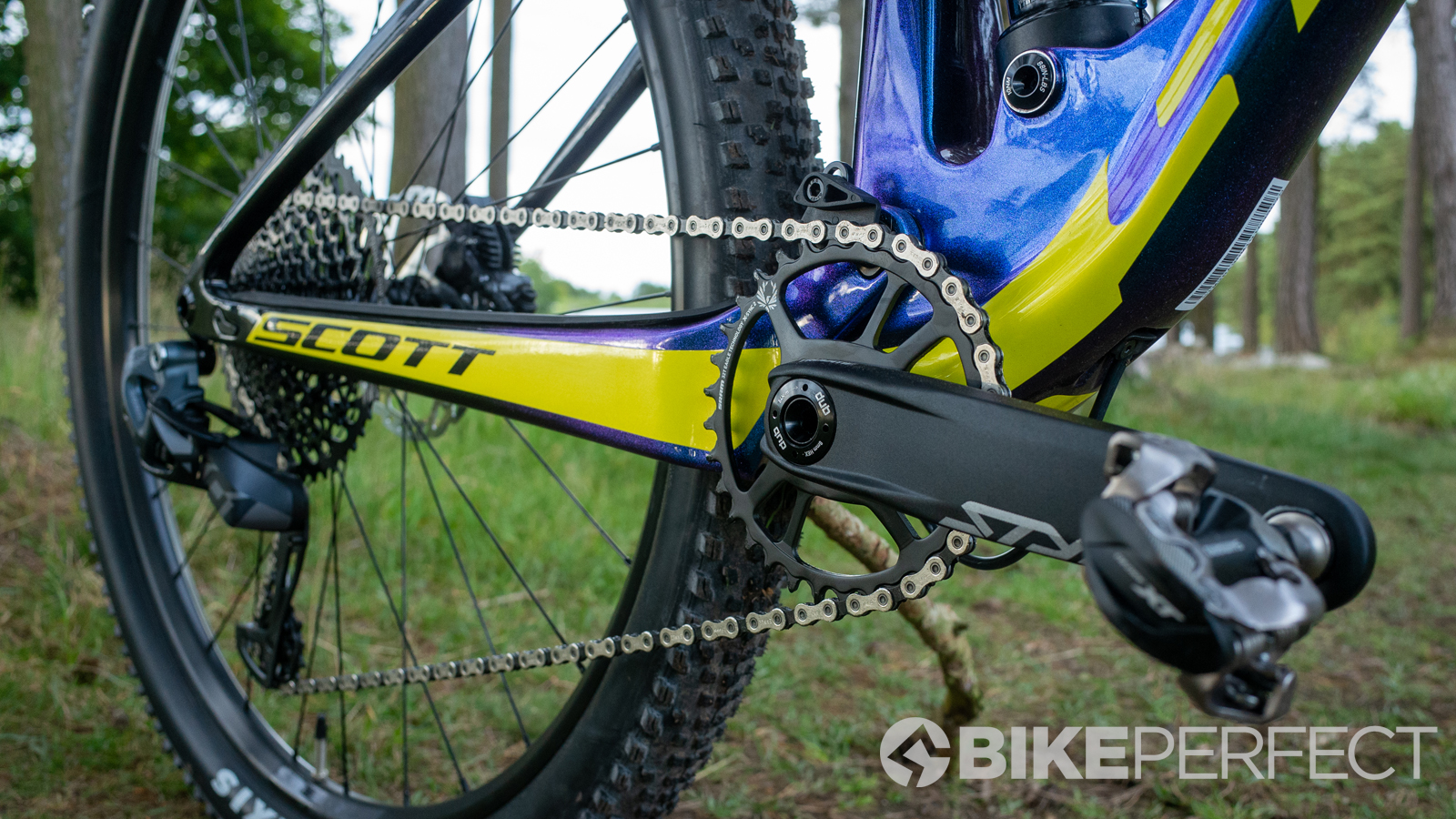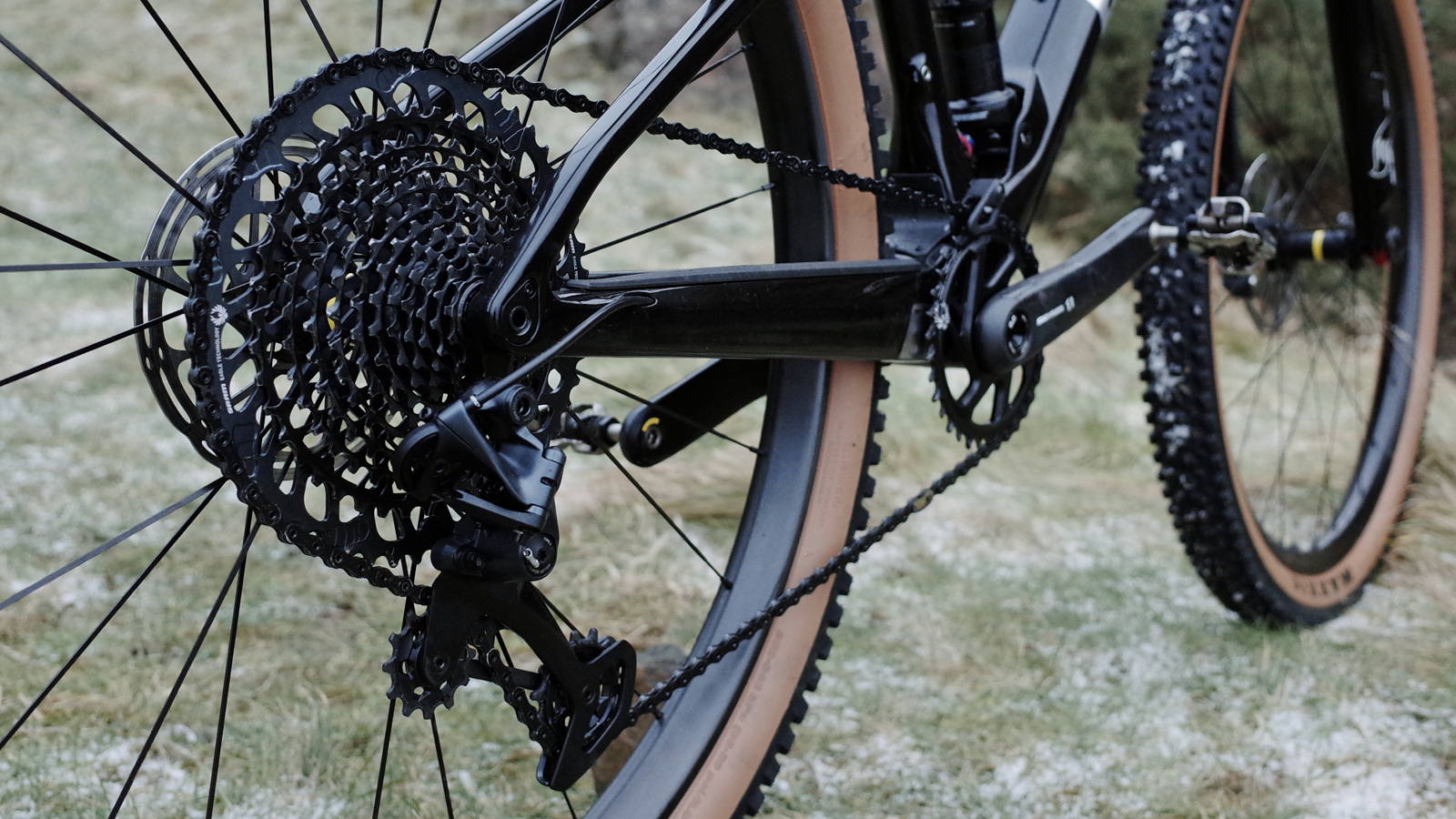Mountain bike gears explained – a beginners' guide to using gears
We take a look into the basics of mountain bike gearing, here's what you need to know

If you are new to cycling then the gears on a mountain bike can seem confusing. Even if you are coming from an older mountain bike or a road bike, there are quite a few differences that might seem odd compared to the drivetrains you are used to.
Gears have only got better as technology has improved, gone are the days of intense rattling and dropped chains and instead, it's slick precise, and reliable single chainring (1x) systems.
But what do mountain bike gears actually do and how do they work? Well, keep reading as we break down the basics of mountain bike gears.
What are the gears for on a mountain bike?
Gears allow you to change the pedaling speed (known as cadence) and effort required when riding up or down a hill. The mechanics are pretty simple, by changing the gear ratio, you are changing the amount of forward distance per pedal stroke. The result means changing into a lower gear makes it's easier to pedal on steep inclines, whereas changing into a harder gear allows you to go faster.

Why do newer mountain bikes have less gears?
Older mountain bikes used to have up to 27 gears by using multiple front chainrings. However, modern mountain bikes now only feature a single front chainring. Based on the above, surely more gears are better right?
In practice, more isn't better and while modern mountain bikes only have between 10 to 12 gears, the rear cassettes have got considerably bigger. The result is that although the best mountain bike groupsets have less gears, modern 1x drivetrains actually have a similar range to older systems. To make gear range easier to understand, it is measured in percentages. That means the bigger the percentage is the bigger the difference between your easiest and hardest gear. Back in the day a 2x10 system provided a 470 percent range, while in 2012 1x11 drivetrains were achieving 420 percent. Nowadays, with most cassettes having 50 teeth or more on the biggest gear, we're seeing massive 520 percent ranges – which is more than enough to get up the steepest climbs with ease.
Modern 1x cranksets also have alternating tooth profiles, known as narrow-wide. These teeth are specially designed stop the chain from falling off on bumpy trails – something that wasn’t possible on older double or triple chainsets. 1x systems make drivetrains a lot simpler to use too, allowing riders to quickly shift through all the gears without worrying about cross-chaining (when going from the biggest chainring to the bigger cogs on the cassette, which damages the chain).
The matching of range plus the reliability and simplicity has resulted in 1x systems now becoming the standard on all mountain bikes. You can still find bikes with a double or triple, but it's only on the very low end of the best budget mountain bikes.

How do mountain bike gears work?
Most mountain bike gear systems work in a similar manner, there will be a shifter attached to the handlebar and when one of the levers is pushed, it moves the rear derailleur which pushes the chain onto another sprocket on the cassette. In terms of how the shifter moves the derailleur, there are two common types of gears on a mountain bike: mechanical and electronic.
Most bikes use a mechanical system that has a metal cable that is tightened and loosened by the shifter. Electronic systems like SRAM’s GX AXS drivetrain use a wireless signal to control a servo motor in the derailleur. Electronic systems offer a smoother, faster gear shift but are still reserved for the most expensive bikes, the technology is slowly coming down in price though.
Some manufacturers have experimented with gearboxes although these are still very uncommon and very expensive. Some mountain bikers opt for no gears at all, instead running a single-speed drivetrain for ultimate simplicity and the masochistic "thrill" of struggling up hills.
Why don’t my gears work well?
Mountain bike gears are more reliable than ever but that doesn't mean they don't need to be looked after. Cleaning your mountain bike is the best way to keep everything in good condition and applying one of the best chain lubes post-wash will keep your gears running smoother for longer.
As you use your bike parts will become worn and need to be adjusted to keep shifting well. It might seem like an intimidating job but basic tweaks are actually quite easy to do yourself, if you fancy giving it a go check out our how to adjust shifting on a MTB guide.

Graham Cottingham joined the BikePerfect team as our senior tech writer in 2020. With over 20 years of riding experience, he has dabbled in downhill, enduro, and gravel racing. Not afraid of a challenge, Graham has embraced bikepacking over the last few years and likes nothing more than strapping some bags to his bike and covering big miles to explore Scotland's wildernesses. When he isn’t shredding the gnar in the Tweed Valley, sleeping in bushes, or tinkering with bikes, he is writing tech reviews for BikePerfect.
Rides: Cotic SolarisMax, Stooge MK4, 24 Bicycles Le Toy 3, Surly Steamroller
Height: 177cm
Weight: 71kg
